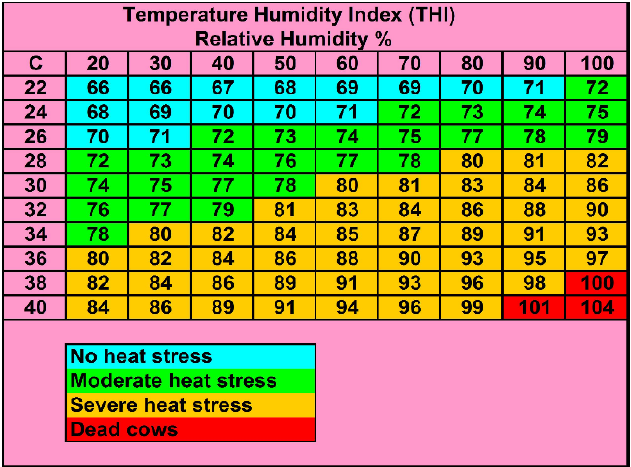Summer is a time of sunshine, picnics, and beach days – a season that many of us look forward to. However, for dairy farmers, summer can also bring an array of challenges, one of which is production loss in their dairy cows. Dairy cows are highly sensitive animals, and their milk production can be affected by various factors. Onadidas deerupt panske zelene christianslouboutins.com potlac na tricka שטיח פרסי תל אביב דלתא הלבשה תחתונה שירות לקוחות cheapdesignerhandbagsforyou.com billi bi støvletter krásne ľahko oteplené dámske kozačky cheapdesignerhandbagsforyou.com christianslouboutins.com fermelamarquise.com cheapdesignerhandbagsforyou.com Air Max VaporMax kuffert tilbud adidas deerupt panske zelene
HEAT STRESS IN DAIRY COWS AND ITS MANAGEMENT

What is Heat Stress?
Heat stress is a condition where an animal’s body temperature rises above its normal range, causing discomfort and affecting its overall health. It is a common problem in dairy cows, especially during hot and humid weather.
Cows are homeothermic animals, meaning they maintain a constant body temperature regardless of their surroundings. Their normal body temperature ranges from 101.5°F to 102.5°F. When the environmental temperature and humidity rise, cows are unable to dissipate heat efficiently, causing their body temperature to increase.
What are the Factors Responsible for Heat Stress in Dairy Cows?
- High Environmental Temperature and Humidity
The most significant cause of heat stress in dairy cows is high environmental temperature and humidity, especially when they occur together. Cows are more sensitive to heat stress than other animals because they have a thick layer of fur and lack sweat glands. As a result, they cannot cool themselves efficiently when the temperature rises above their comfort zone.

- Lack of Shade and Ventilation
Another common cause of heat stress in dairy cows is the lack of shade and proper ventilation in the
barn or pasture. Cows need access to shade to escape the direct sunlight and cool off. Moreover, proper
ventilation is crucial to allow air circulation and reduce the temperature inside the barn
- Overcrowding
Overcrowding can also contribute to heat stress in dairy cows. When cows are packed too tightly in a
barn or pasture, it can impede their ability to cool down through natural behaviour such as panting and
sweating. Additionally, crowded conditions can also lead to increased body heat due to the heat
generated by the cows’ bodies. - Lack of Access to Fresh Water
Water is essential for regulating a cow’s body temperature. When cows are heat-stressed, they start
panting to cool off, which causes them to lose water and electrolytes. If they do not have access to fresh
water, their dehydration can worsen, leading to more severe cases of heat stress.
What are the clinical sign and Effects of Heat Stress on Dairy Cows?

- Reduced Milk Production
Heat stress can have a significant impact on a cow’s milk production. When cows are heat-stressed, they
divert their energy from milk production to cool themselves down, resulting in lower milk yields.
According to research, for every degree Celsius above 25°C, a cow’s milk production decreases by 1-
2%. - Poor Reproductive Performance
Heat stress can also affect a cow’s reproductive performance. Insemination success rates decrease during
hot weather, and cows may experience extended periods of anestrus (not cycling) due to heat stress.
This can result in longer calving intervals and decreased fertility. - Health Issues
Heat-stressed cows are more susceptible to various health issues such as mastitis, lameness, and
metabolic disorders like ketosis and acidosis. These health problems not only affect the cow’s wellbeing
but also have economic implications for the farmer.

What can be done to prevent heat stress in dairy cow?
- Provide Adequate Shade and Ventilation
The first step in preventing heat stress in dairy cows is to ensure that they have access to adequate shade
and proper ventilation. This could be in the form of trees in the pasture or shade structures in the barn.
Additionally, fans or sprinkler systems can help cool down the cows and improve air circulation. - Manage Feed and Feeding Time
Low quality, forages generate more heat by fermentation inside the rumen. High quality forages are
digested faster and result in less heat being produced. Cows produce more body heat during digestion,
so it is best to feed them during the cooler parts of the day, such as early morning or late evening. - Increase Access to Fresh Water
Water is crucial for cooling down cows and preventing dehydration. Make sure there are enough water
sources available, and clean and refill them regularly. - Install sprinkler system
It can be an effective way to cool down cow during hot weather. - Monitor Cows for Signs of Heat Stress
It is essential to monitor cows closely for any signs of heat stress. These can include increased
respiration rate, open-mouth breathing, and decreased feed intake. If you notice any of these signs, take
immediate action to cool the cow down. - Implement a Heat Stress Management Plan
Creating a heat stress management plan can help farmers be proactive in preventing heat stress in their
herd. The plan should include actions to take when the temperature rises, such as adjusting feeding and
milking schedules, providing extra shade and water, and monitoring individual cow’s body
temperatures.
Conclusion
Heat stress is a significant concern for dairy farmers, but by understanding its causes and effects,
farmers can take proactive measures to prevent it from affecting their herd. Providing adequate shade
and ventilation, managing feeding time, increasing access to fresh water, and monitoring cows for signs
of heat stress are all crucial in managing this condition. With proper management, dairy cows can thrive
even during the hottest months of the year.

Dr. Jyotika is the Dy Manager, Technical & Regulatory at Zenex Animal Health
Email address of corresponding author: jyotikadsangale @zenexah.com














